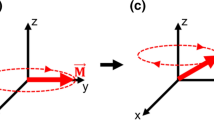Abstract
Among the most important, conservative geochemical tracers are the long-lived isotopes of krypton, 81Kr and 85Kr. Following a brief review of the metrology and applications of these radionuclides, we focus on the low-level measurement of the 10.8 year fission product 85Kr, in connection with its use for studying atmospheric transport and short term (decadal) atmosphere-ocean exchange and mixing. Special challenges for the study of 85Kr in the environment are: (1) reducing detection/quantification limits to mBq levels, to minimize the need for costly (large) atmospheric and marine samples, where current levels are ca. 1.4 Bq·m-3 (northern troposphere) and 0.08 mBq·kg-1 (surface ocean water); and (2) designing a protocol that accounts for the influence of both instrumental and environmental backgrounds and their variability. The capability of the NIST enhanced low-level gas counting system to meet these challenges was demonstrated theoretically and experimentally, showing that ambient 85Kr can be quantified in just 1.5 l air or 25 l seawater with 2000 min paired counting periods.
Similar content being viewed by others
References
P. Collon, T. A. Antaya, B. Davids, M. Fauerbach, R. Harkewicz, M. Hellstrom, W. Kutschera, D. J. Morrissey, R. C. Pardo, M. Paul, B. M. Sherrill, M. Steiner, Nucl. Instr. Meth., B123 (1997) 122.
H. Oeschger, The contribution of radioactive and chemical dating to understanding of the environmental system, Ch. 2 in: Nuclear and Chemical Dating Techniques: Interpreting the Environmental Record, L. A. Currie (Ed.), American Chemical Society Symp. Ser. No. 176, 1982, p. 5.
W. Weiss, A. Sittkus, H. Stockburger, H. Sartorius, K. O. Munnich, J. Geophys. Res., 88 [C13] (1983) 8574.
P. Collon, Development of cyclotron AMS for the detection of 81Kr and first application to groundwater dating, PhD Thesis, Univ. of Vienna, 1999.
I. Levin, V. Hesshaimer, J. Geophys. Res., 101[D11] (1996) 16745.
J. Sarmiento, A Chemical Strategy for the World Ocean Circulation Experiment (WOCE), §III.F. The use of 85Kr for investigation of ocean mixing and circulation, US Planning Report 10, College Station, TX, 1988. Addendum
C. Y. Chen, Y. M. Li, K. Bailey, T. P. O. Connor, L. Young, Z. T. Lu, Science, 286 (1999) 1139. N. Thonnard, M. G. Payne, D. Lu, Rev. Sci. Instrum., 65 (1992) No. 8, 2433.
K. F. Von Reden, A. P. Mcnichol, J. C. PEDEN, K. L. ELDER, A. R. GAGNON, R. S. SCHNEIDER, Nucl. Instr. Meth., B123 (1997) 438, and references therein.
International Atomic Energy Agency, Proc. Consultants Meeting on Isotopes of Noble Gases as Tracers in Environmental Studies, IAEA, Vienna, 1989.
L. WILHELMOVA, M. TOMASEK, K. STUKHEIL, Biol. Trace Elem. Res., 43 (1994) 725.
L. A. CURRIE, Anal. Chim. Acta, 391 (1999) 105.
L. A. CURRIE, Nucl. Instr. Meth., 100 (1972) 387.
E. CSONGOR, L. WILHELMOVA, Z DVORAK, P. POVINEC, M. Grgula, Appl. Radiation Isotopes, 39 (1988) 401.
L. A. Currie, E. M. Eijgenhuijsen, G. A. Klouda, Radiocarbon, 40 (1998) 113.
Author information
Authors and Affiliations
Rights and permissions
About this article
Cite this article
Currie, L.A., Klouda, G.A. Detection and quantification capabilities for 85Kr with the NIST low-level gas counting system: Impacts of instrumental and environmental backgrounds. Journal of Radioanalytical and Nuclear Chemistry 248, 239–246 (2001). https://doi.org/10.1023/A:1010691922999
Issue Date:
DOI: https://doi.org/10.1023/A:1010691922999




